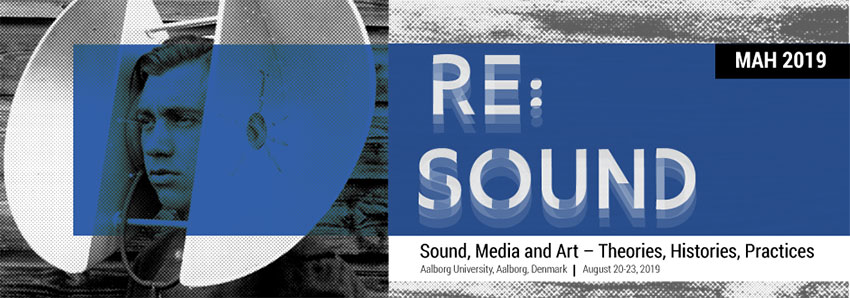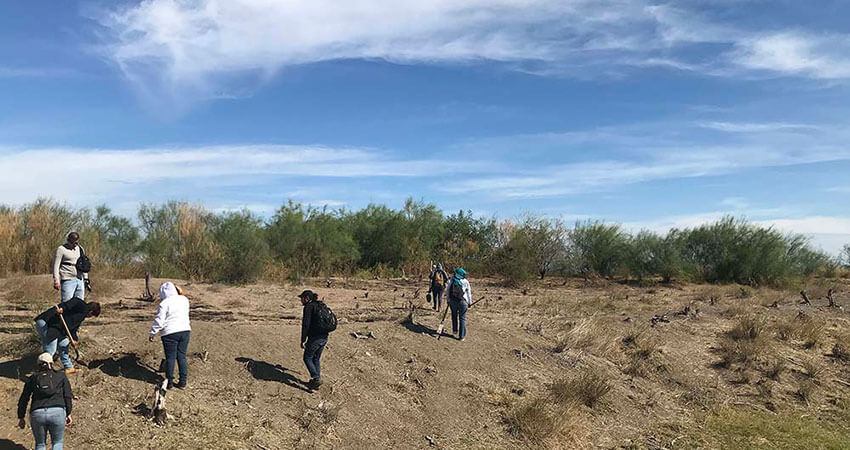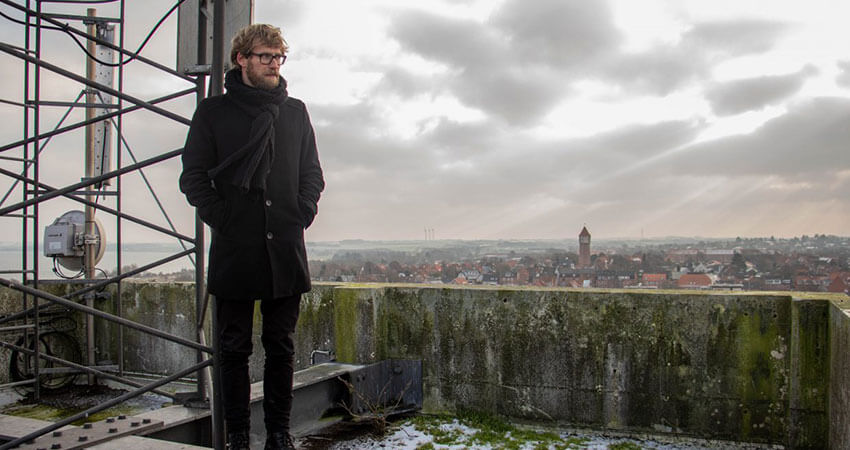Text by Laura Netz

RE:SOUND is part of the Media Arts Histories conference series, bringing together leading researchers, artists, and scientists on a series of interdisciplinary topics for over 14 years. Sonic experiments and expressions saturated the histories of art. The occurrence of sound in art throughout the 18th, 19th and 20th centuries remains heavily under-theorised and -contextualised, just as it is all but missing in existing archives (with few relevant, albeit recent, exceptions). RE:SOUND addresses this techno-resonance, transmediality, and cultural and social reverberation of media art in general. RE:SOUND hosted four days with ten tracks of paper sessions, panels, workshops, practice-based interventions, exhibitions, performances, poster sessions, a PhD workshop and keynotes.
The Chairs of the conference were Dr Morten Søndergaard (Conference Chair), Associate Professor and Curator/Creator of Interactive Media Art at Aalborg University, Denmark, and Dr Laura Beloff (Conference Co-Chair). And the keynote speakers were Marie Højlund, Samson Young and Jamie Allen, who opened the conference with the talk titled Beyond the Media Reveal: Full of Sound and Fury, Signifying… What?
A conference about how the media arts seem quite concerned with a particular set of binaries: mediums and messages, contexts and contents, forms and functions, and also how these dualities are endlessly fascinating, allowing for repeated reassertions of materialist reveals. Another keynote speaker was Salomé Voegelin, who presented the paper Sonic Materialism: A Philosophy of Digging and Gardening, an experience she names “curating conference” presenting tracks (by Aine O’dwyer, Ellen Fullman Okkyung Lee, Rie Nakajima and Akira Sakata), reading her papers and quoting references such as Angus Carlyle, Karen Barad or Rosi Braidotti. Salome Voegelin refers to “the in-between” and “altogether” as a unified experience in the sonic presence.
Refusing theorisation, this sonic matter has no stable identity. The codependence and its existence refuse dualistic thinking, rooted in anthropocentrism, and the theoretical discourse from visual culture. Sonic materialism is a feminist non-dualistic, irrational, open ambiguity approaching existence and confronting the pragmatic rationalism, the masculine, resulting in excessive centres of calculation where maths objectivity systematises reality. However, sonic materialism is the in-between, a proposal for sonic feminism bearing the unintelligible, the uncountable real, the asymmetrical, and unstable: this fluid subjectivity represents sensibility, an interbeing not in opposition, but in co-existence, with autonomy, representing the creativity, the poet, or the black mother – a sonic female new materialism, representing an antinomic logic, through practices of uncurating.
Christoph Cox, the last keynote speaker, closed the conference with a paper titled Matter, Flow, Sound, Politics. Christoph Cox is a Professor of Philosophy at Hampshire College. He is the author of Sonic Flux: Sound, Art, and Metaphysics (University of Chicago Press, 2018) and Nietzsche: Naturalism and Interpretation (University of California Press, 1999) and co-editor of Realism Materialism Art (Sternberg, 2015) and Audio Culture: Readings in Modern Music (Bloomsbury, 2017; Continuum, 2004). His writing has appeared in October, Artforum, Journal of the History of Philosophy, The Wire, Journal of Visual Culture, Organised Sound, The Review of Metaphysics, and elsewhere. He has curated exhibitions at the Contemporary Arts Museum Houston, The Kitchen, The Artist’s Institute, CONTEXT Art Miami, New Langton Arts, G Fine Art Gallery and other venues.
At the Curators Panel, Arnau Horta introduced his forthcoming Barcelona exhibition at Fundacio Joan Miro, titled Sound Art. Morten Sondergaard presented Curating Sound Art as a political challenge where sound art is curated in public space, turning audiences into sound citizens, perceiving the city’s political unconscious. These layers of history are now transferred thanks to an aesthetical openness. Barbara London, the MOMA curator, references how Pop Art and music culture influenced her practice of curating. From Bowie to Warhol to the 1970s clubs, Barbara London started working with Laurie Anderson and Terry Fox, for instance. Barbara London also mentioned her tasks as a curator in Soundings, the exhibition at MOMA, in 2013, requiring two years of production.
On this occasion, she decided not to use the headphones, making sound contamination become a group experience with works by Jana Winderen or Tristan Perish, among others. Salome Voegelin, also at the Curators Panel, stated about the concept of uncurating, developed from the experience of working with sound design as a restrictive sign of patriarchy. Interested in Feminism, caretaking and the relations between space, artists, and audience, she refused the concept of curatorial as being born from the neoliberal institution ending in the commodification of artworks. When sound art is political, the value of art cannot be economically valued as a rarety. Also, Salome Voegelin notes how curating is a selection process based on personal taste, not plural, but contingent and limited, instead proposing practices of uncurating.

The RE:SOUND conference was organised by Track Chairs Tanya Toft Ag, Gabriela Aceves Sepúlveda with Freya Zinovieff, Luz Maria Sánchez, Magdalena Zdrodowska, Daniel Cermak, Liora Belford with Jason van Eyk, Dolores Steinman, Rahma Khazam, Rodrigo Guzman with Morten Søndergaard, Sebastian Bülow. It is to highlight as well the participation of the Whitney Curator, Christiane Paul, who presented the extensive group shows Programmed: Rules, Codes, and Choreographies in Art, 1965 – 2018, Whitney Museum of American Art (2018), with works by Sol Lewitt, Casey Reas, Albers, D. Judd, C. Csuri, Joan Truckenbrod, R. Rozendaal, Lucinda Childs, Ian Cheng, L. Weiner, J. Kosuth, W. Bradford Paley, Nam June Paik, Lynn Hersham, Steina, Jim Campbell, Cory Arcangel, and Tamiko Thiel, among others.
RE:SOUND conference also organised an exhibition at the Musikkens Hus building in the city of Aalborg. All sound art pieces, it is to highlight the installation, Vis.[un]necessary force_4 | V.[u]nf_4 (2018-2019) by Luz María Sánchez addresses one of the most painful problems resulting from violence in contemporary Mexico: forced disappearance. Given the inefficiency of the authorities in providing certainty about missing people’s whereabouts and conducting legal processes, civil society has organised independently to undertake the search for family and friends. V. [u]nf_4 is part of a long collaboration process between the artist and the group Las Rastreadoras from Sinaloa, northern Mexico. The installation using a multi-channel sound system with a tablet resembles the state of necropolitics perpetuated by politics and inefficient and corrupt estates in the systemic inequalities of the north-south.
Another installation to highlight is from Paul DeMarinis, who, in Groovular Synthesis – the Edison Effect Revisited (2019), develops the work as a combination of two contraptions that centre on playing a single text as sounds. A spoken voice track is accompanied by another rendition in Morse code. The Morse code groove was engraved on a brown wax Edison cylinder by a 15-watt blue laser controlled by an Arduino+MaxMSP patch.
It is played back by scanning the groove with a small red laser dot and using analogue photo-pickups to decode the reflections into sounds. The plaintext resides on a black wax cylinder scanned by a small video camera and synchronised with a manipulated vocal recording of the same text. Groovular Synthesis was conceived to make maximal use of contemporary DIY and digital-craft platforms and manufacturing techniques, including Arduino and Raspberry Pi, 3D Printing, Laser cutting, Form2 resin printing, as well as traditional techniques of mould making, wax casting, hand painting and soldering.
The RE:SOUND conference curatorial team also programmed a Live AV performance series. Budhaditya Chattopadhyay presented Exile and Other Syndromes (2019), a generative composition part of an augmented book project that responds to the current indisposition of migration, mobility, placeless-ness and nomadism. The work develops a fluid, sculptural form of sound in a carefully mediated interaction with sound-generated text patterns framing the contemplation of a nomadic listener as an artefact using an AI algorithm to read and transform the book’s content into live visuals.
The performance of the work incorporates a multichannel live projection of the visuals on multiple screens augmented with multi-channel sound. Also, the artist Joe Cantrell, from San Diego, CA, USA, presented The Human Object: New Materialist Models to Resist Obsolescence in Technological Sound Practices, a performance with amplitude modulation synths, old cassettes and circuit-bended objects. The result is an inspirational practice that resembles the theories of deep time. Joe Cantrell is a musician and sound artist inspired by the implications and consequences of technological objects and practices. His work examines the continuous acceleration of technology and media production.

Moreover, Claudia Robles-Angel, presented SKIN II (2018), a live AV performance where the artist presents the Human body as an AV instrument. The performance uses Galvanic Skin Response sensors, and biofeedback methods sense the internal fluctuation of the body. Using health and biosensors in real-time modulation with Arduino and MAX/MSP, SKIN is a performance and an installation.
RE:SOUND conference collaborated in putting a panel with STRUER TRACKS Festival. The panel about Sound Art, Community and Engineering highlighted the interest of biennials, designers, and artists in production processes through research but also participating with companies in the industry sector. The panel closed, stating the interest of creators in approaching technology to the community.
Struer Tracks Festival also presented an exhibition where sound art installations were developed as site-specific projects around the city of Struer. It is to highlight the work of Christian Skjødt, The Reciever, an installation on a twelve-floor derelict building, where to experience the sublime, the beauty of the sound but, at the same time, the immensity of the unknown solar timescale. The artist installed a radio telescope with an antenna and a receiver, transducing through more than 24 speakers the electromagnetic emissions of sun radiation. Here, the frequency spectrum of the sound can be experienced as audiences move up the 45-meter-tall building. It goes from low frequency to high frequency. The project is realised in collaboration with engineers, acousticians and other specialists at Bang & Olufsen.
Another installation is by Julian Oliver and Crystelle Vu, Extinction Gong, with sounds from a traditional ‘Chao Gong’. Taking the form of a large traditional ‘Chao Gong, ’ its rear face is fitted with a mechanism that beats to the rhythm of species extinction, estimated by eminent biologist E.O. Wilson to be about 27000 losses a year, or once every 19 minutes. Seen at its front, the Extinction Gong hangs in a large metal frame and bears the stark neo-primitivist image of the Extinction Symbol, the official mark of the Sixth Mass Extinction. Seen from the back, however, it is a work of engineering, complete with a mallet, electro-magnet, audio transducer, embedded computer and 3g downlink.
Also in the exhibition there are Younes Baba-Ali, Horn Orchestra, with sounds from car horns collected in Belgium, France, Poland and Morocco; Jacob Kirkegaard, En By i Rusland (A Town in Russia), with sounds from a Russian town; Oswaldo Maciá, Fables of the Wind – A Swarm Welcome; Lundahl & Seitl, Unknown Cloud; Magnus Bugge, Soundtracks for Webcams; Hanne Lippard, There are 36 ways to view Mount Fuji & Lostisms; Ignas Krunglevičius, Signal to Noise Ratio; Elsebeth Jørgensen, Gæstens Globus (The Globe of the Guest); Sandra Boss & Jonas Olesen, Interferens; Maia Urstad, Nattefærd (Night Journey). In a nutshell, Media Art Histories RE:SOUND conference puts into evidence the complex systematisation of techno-scientific processes in the necropolitics era of biogenetic data capitalism and extracts the possibilities of sound art mediated as sensibilities in a counterforce for developing knowledge in democratic societies.






